Peggy Guggenheim: ‘My motto was “Buy a picture a day” and I lived up to it’
Five years spent at her Sussex country retreat inspired Peggy Guggenheim to reframe her future, kickstarting one of the most thrilling modern-art collections in history

It was 1934 when the magazine editor, poet and socialist Douglas Garman introduced American art collector Peggy Guggenheim to the charms of rural Sussex, during a trip to his mother’s cottage in South Harting. Having met in London a year before, where Peggy was living with the writer and critic John Ferrar Holms, the pair eventually embarked on an affair. Following a summer in Hampshire, Peggy bought Yew Tree Cottage, a Sussex woodland home near Petersfield. ‘My life there was so domestic. In the early spring the forests were filled with wild garlic… the children [Pegeen and Sindbad] loved to find bird nests, and we had the heavenly cry of the cuckoo,’ she recalled.

Peggy Guggenheim at her typewriter c.1965
Though it was a tumultuous period – including the sudden death of Holms due to complications arising from an operation – Guggenheim's bucolic Yew Tree years were a fertile period in her life.
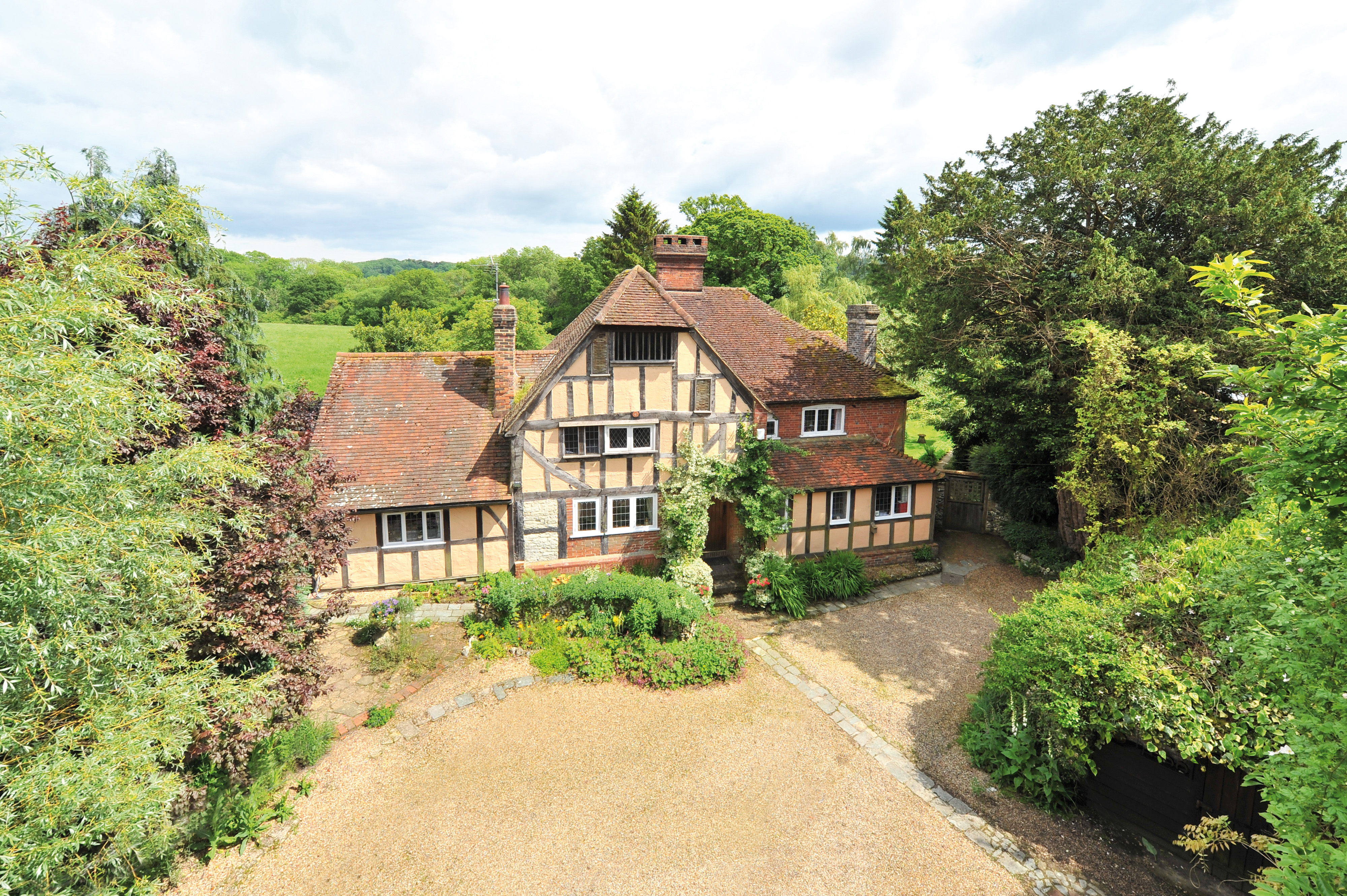
Peggy Guggenheim's former home, Yew Tree Cottage in Sussex, pictured in 2016
We have Louise Weller, head of Collections and Exhibitions at Petersfield Museum and Art Gallery, and Karole PB Vail, Peggy Guggenheim’s elder granddaughter, to thank for putting them in the spotlight in an exhibition, ‘Peggy Guggenheim: Petersfield to Palazzo’, at Petersfield Museum and Art Gallery, Hampshire. For it was while staying at Yew Tree that the budding gallerist began to reframe her life, seriously considering her long-held desire of opening her own art museum.
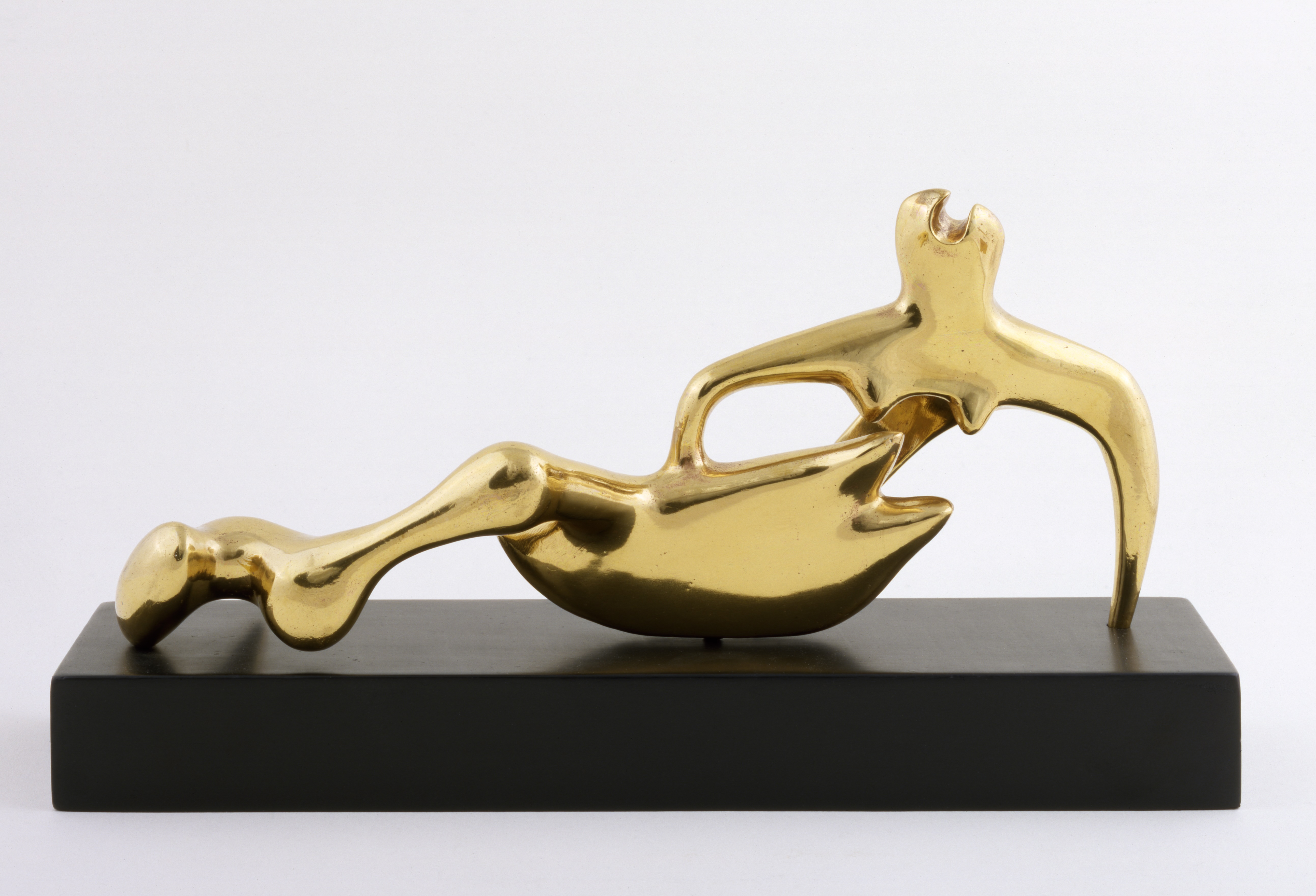
Henry Moore, Reclining Figure
Guggenheim’s professional vision sharpened and, as her confidence grew, she began to buy artwork directly from artists, kicking off one of the most important modern-art collections in history. By 1938, on the cusp of her fourth decade, and with Marcel Duchamp as key advisor, Peggy established Guggenheim Jeune gallery at 30 Cork Street, London.
A series of more than 20 exhibitions followed, introducing nascent abstract and surrealist artists, Piet Mondrian, Yves Tanguy and Jean Cocteau among them, to Britain. The gallery operated for 18 months until the Second World War forced Peggy to decamp to her native New York, taking the beginnings of her ‘museum’ with her.
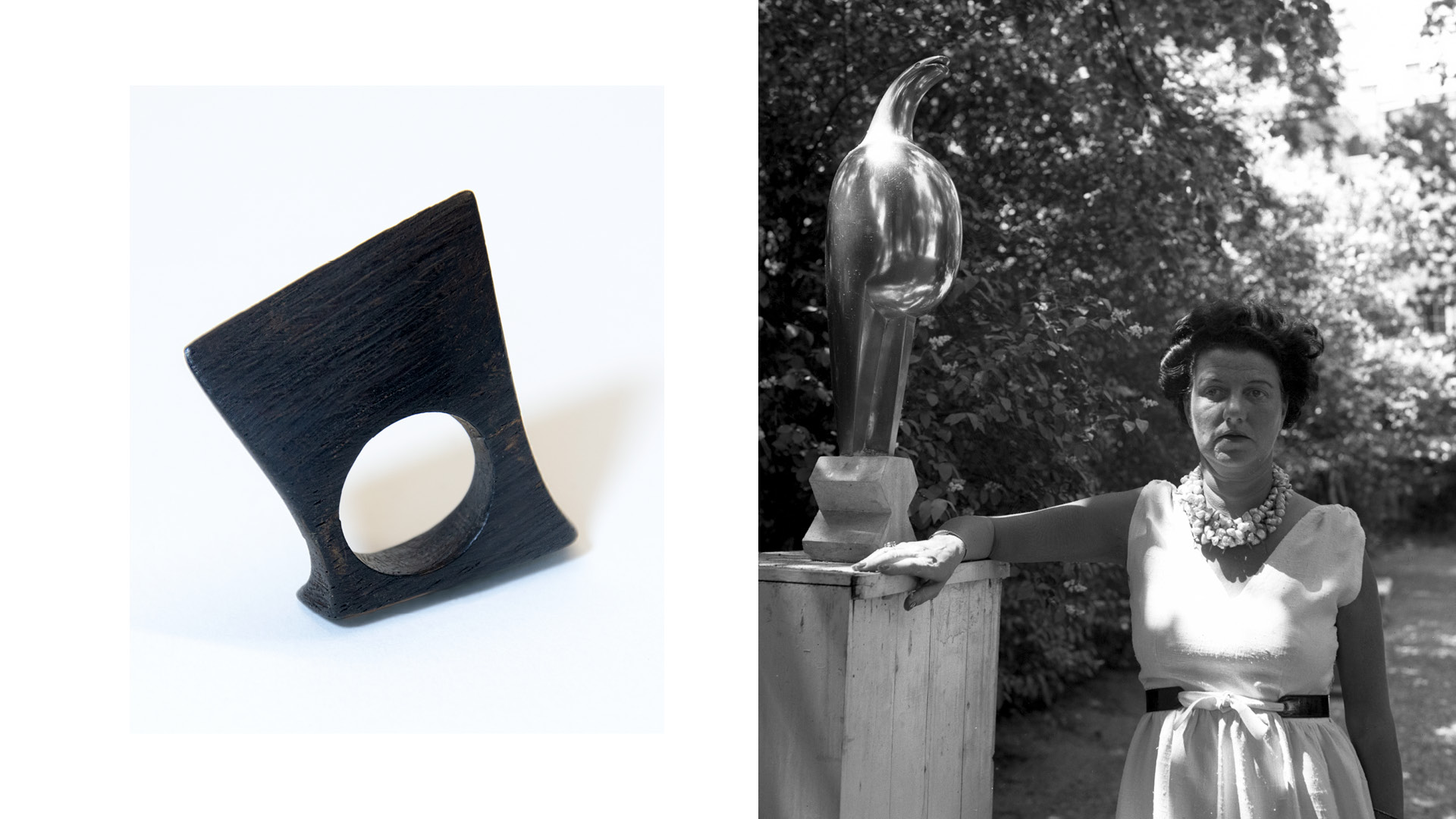
Left, Rosewood ring by Yves Tanguy, c.1937. Right, Peggy Guggenheim in Venice
Working with the Peggy Guggenheim Collection, Venice – housed in the Palazzo Venier dei Leoni, where Guggenheim settled in 1949, and where Vail now serves as director – Weller has secured a tidy selection of small-scale works to display in the Petersfield exhibition.
Each is beautifully suited to the gallery space, and pieces include sculptures by Henry Moore and Jean Arp, jewellery by Yves Tanguy and works by Max Ernst and Roland Penrose. Also on show are photographs, clothing and personal mementos, adding a tender, personal touch that might have been harder to achiece in a bigger space.
Receive our daily digest of inspiration, escapism and design stories from around the world direct to your inbox.
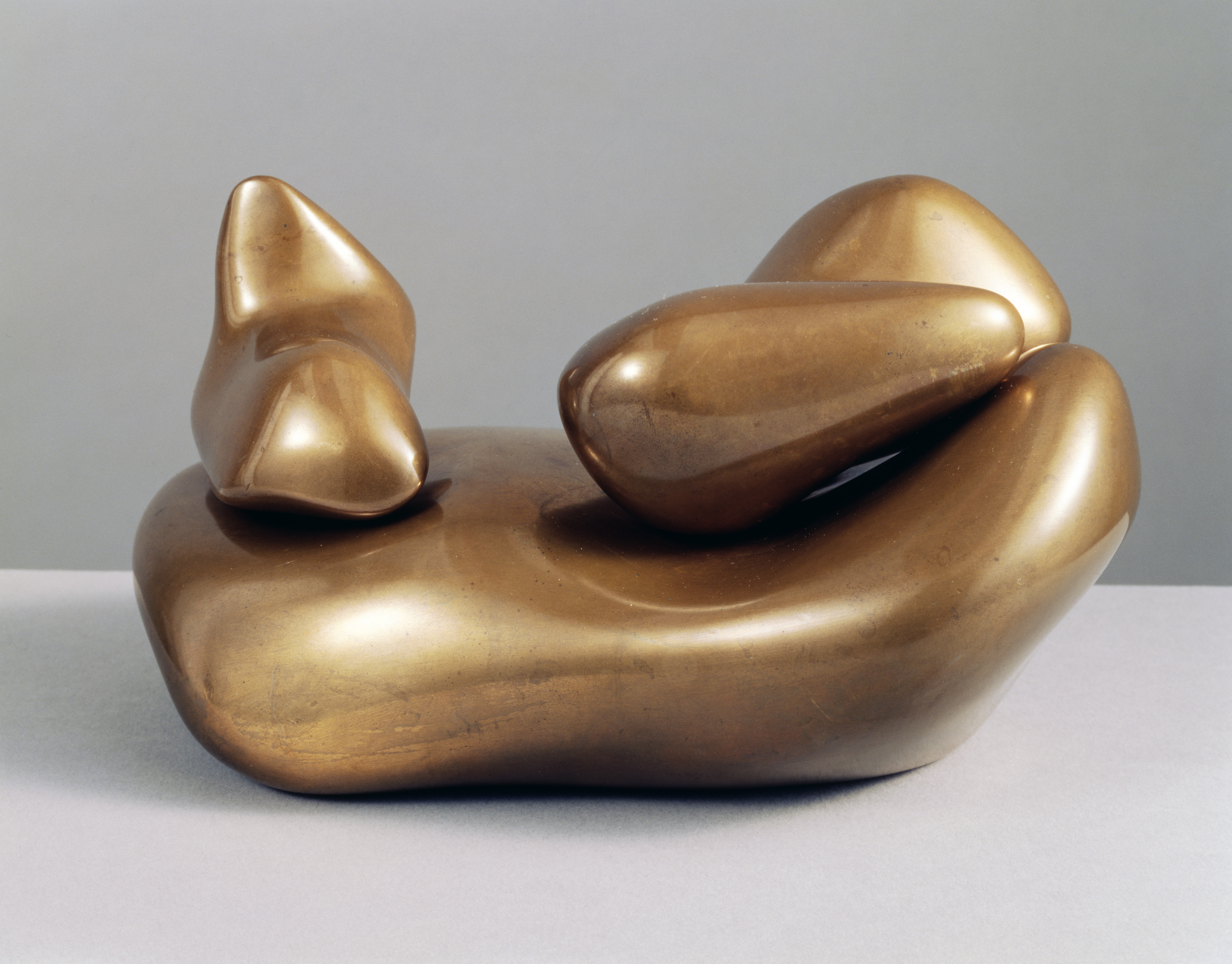
Jean Arp, To be Lost in the Forest
The exhibition is nearing its end (until 5 October 2024), but at just over an hour outside of London by rail or car, it’s worth catching before it closes. And, while the accompanying captions are brilliantly informative, they are far too long to linger over, so I’d advise picking up the exhibition book and catalogue by Vail and Weller to read at leisure instead.
‘Peggy Guggenheim: Petersfield to Palazzo’ is at Petersfield Museum and Art Gallery, Hampshire, until 5 October 2024
Caragh McKay is a contributing editor at Wallpaper* and was watches & jewellery director at the magazine between 2011 and 2019. Caragh’s current remit is cross-cultural and her recent stories include the curious tale of how Muhammad Ali met his poetic match in Robert Burns and how a Martin Scorsese Martin film revived a forgotten Osage art.
-
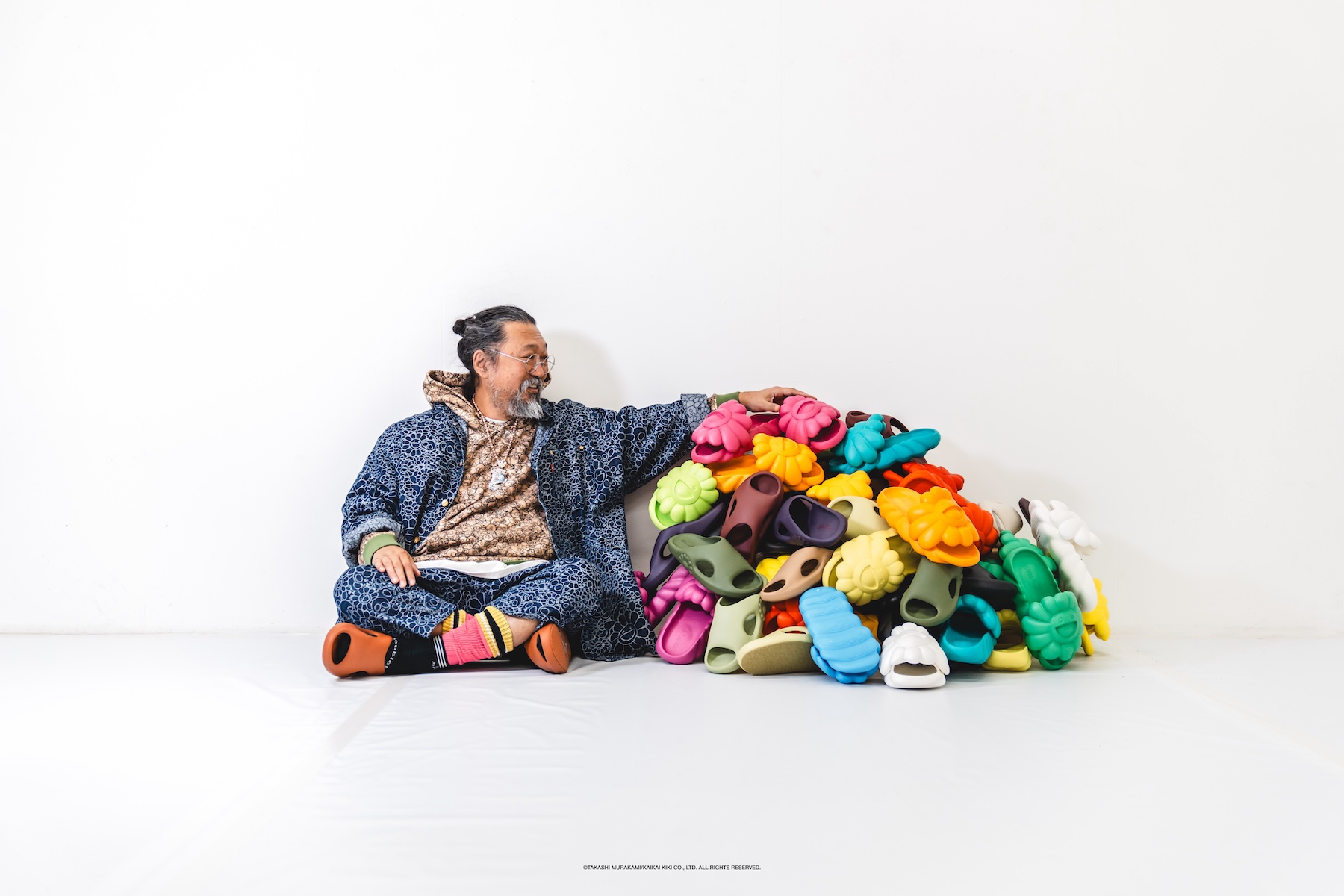 Takashi Murakami’s flower-adorned footwear brand Ohana Hatake has arrived in London
Takashi Murakami’s flower-adorned footwear brand Ohana Hatake has arrived in LondonThe Japanese artist’s colourful sliders appear as part of a summer pop-up at The Corner Shop, Selfridges, which opens today (4 August 2025)
-
 This is rubbish: how Potato Head and Max Lamb turned trash into a design brand
This is rubbish: how Potato Head and Max Lamb turned trash into a design brandWasted is a new design brand by Potato Head, with a series of objects designed by Max Lamb made entirely from the hotel and beach club’s waste streams
-
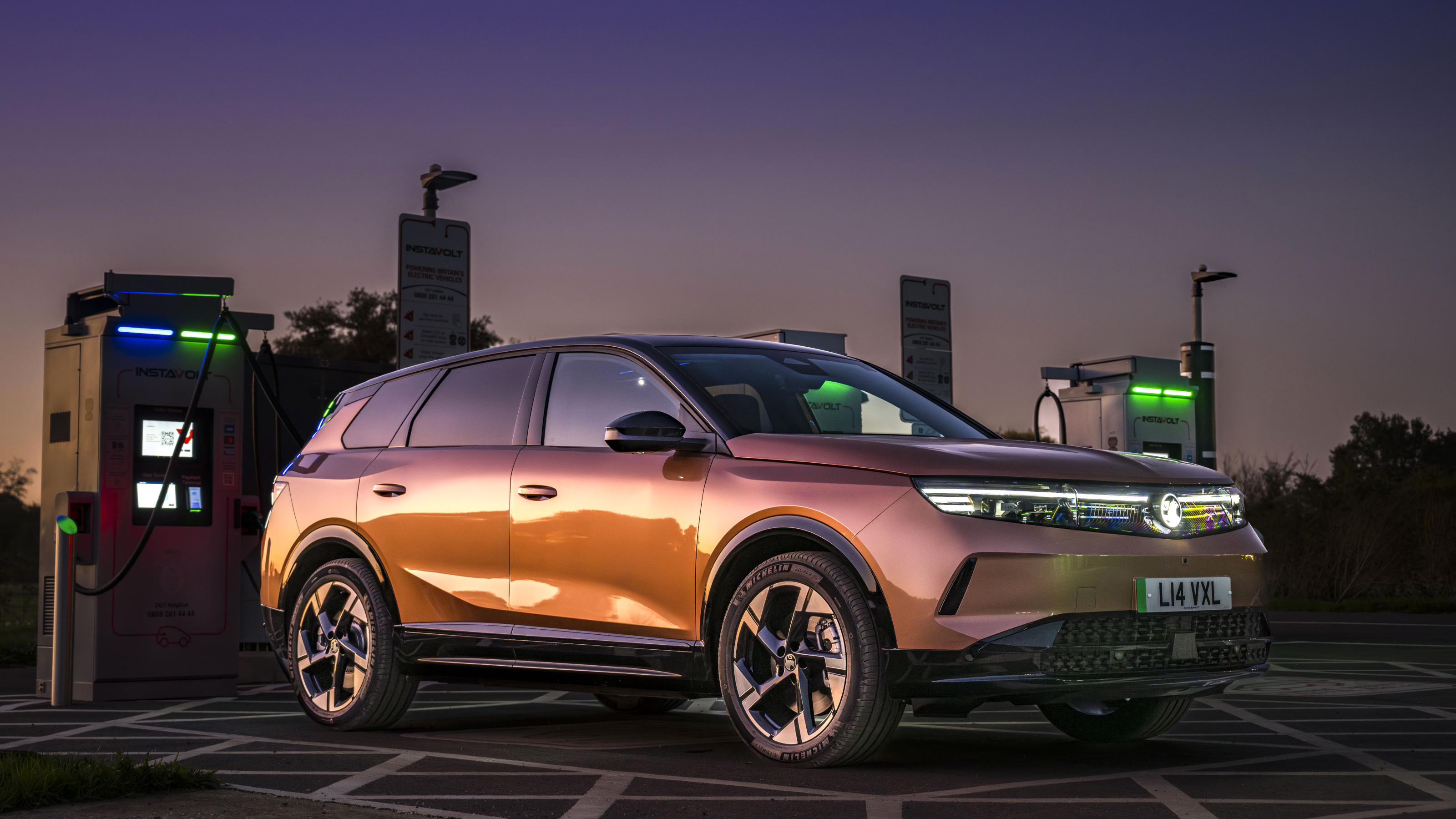 Slide into blissful EV anonymity with the Vauxhall Grandland Electric GS
Slide into blissful EV anonymity with the Vauxhall Grandland Electric GSAs Vauxhall gears up to launch a performance sub-brand, we chronicle the rather more modest achievements of its mid-priced, middle market Grandland SUV
-
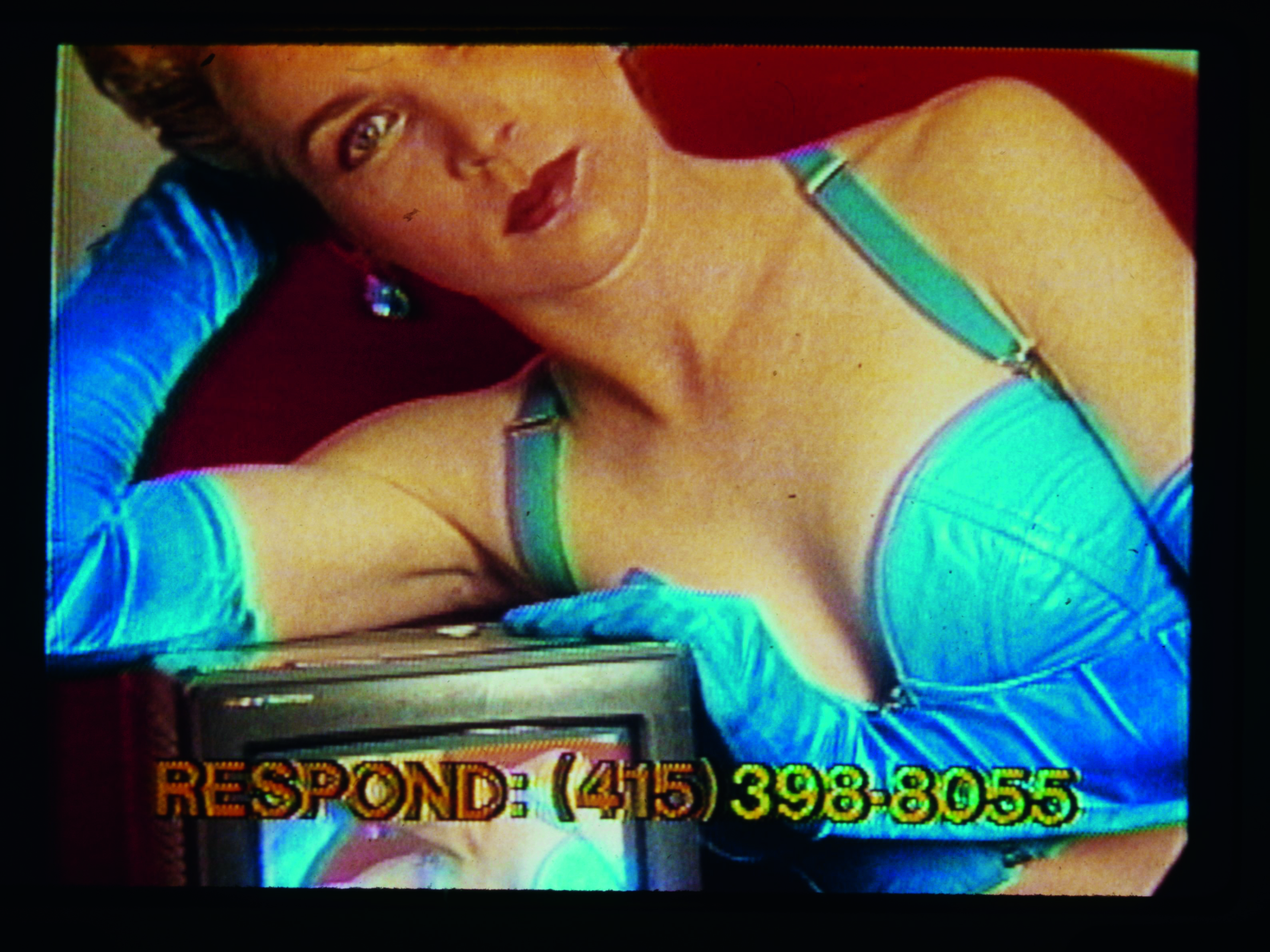 Thirty-five years after its creation, Lynn Hershman Leeson’s seminal video is as poignant as ever
Thirty-five years after its creation, Lynn Hershman Leeson’s seminal video is as poignant as everLynn Hershman Leeson’s 'Desire Inc', at 243 Luz in Margate, blurs the boundaries between art and reality
-
 A bespoke 40m mixed-media dragon is the centrepiece of Glastonbury’s new chill-out area
A bespoke 40m mixed-media dragon is the centrepiece of Glastonbury’s new chill-out areaNew for 2025 is Dragon's Tail – a space to offer some calm within Glastonbury’s late-night area with artwork by Edgar Phillips at its heart
-
 Lubaina Himid and Magda Stawarska’s new show at Kettle’s Yard will uncover the missing narratives in everyday life stories
Lubaina Himid and Magda Stawarska’s new show at Kettle’s Yard will uncover the missing narratives in everyday life storiesThe artists and partners in life are collaborating on an immersive takeover of Kettle’s Yard, Cambridge, in an exhibition that delves into a lost literary legacy
-
 See the fruits of Niki de Saint Phalle and Jean Tinguely's creative and romantic union at Hauser & Wirth Somerset
See the fruits of Niki de Saint Phalle and Jean Tinguely's creative and romantic union at Hauser & Wirth SomersetAn intimate exhibition at Hauser & Wirth Somerset explores three decades of a creative partnership
-
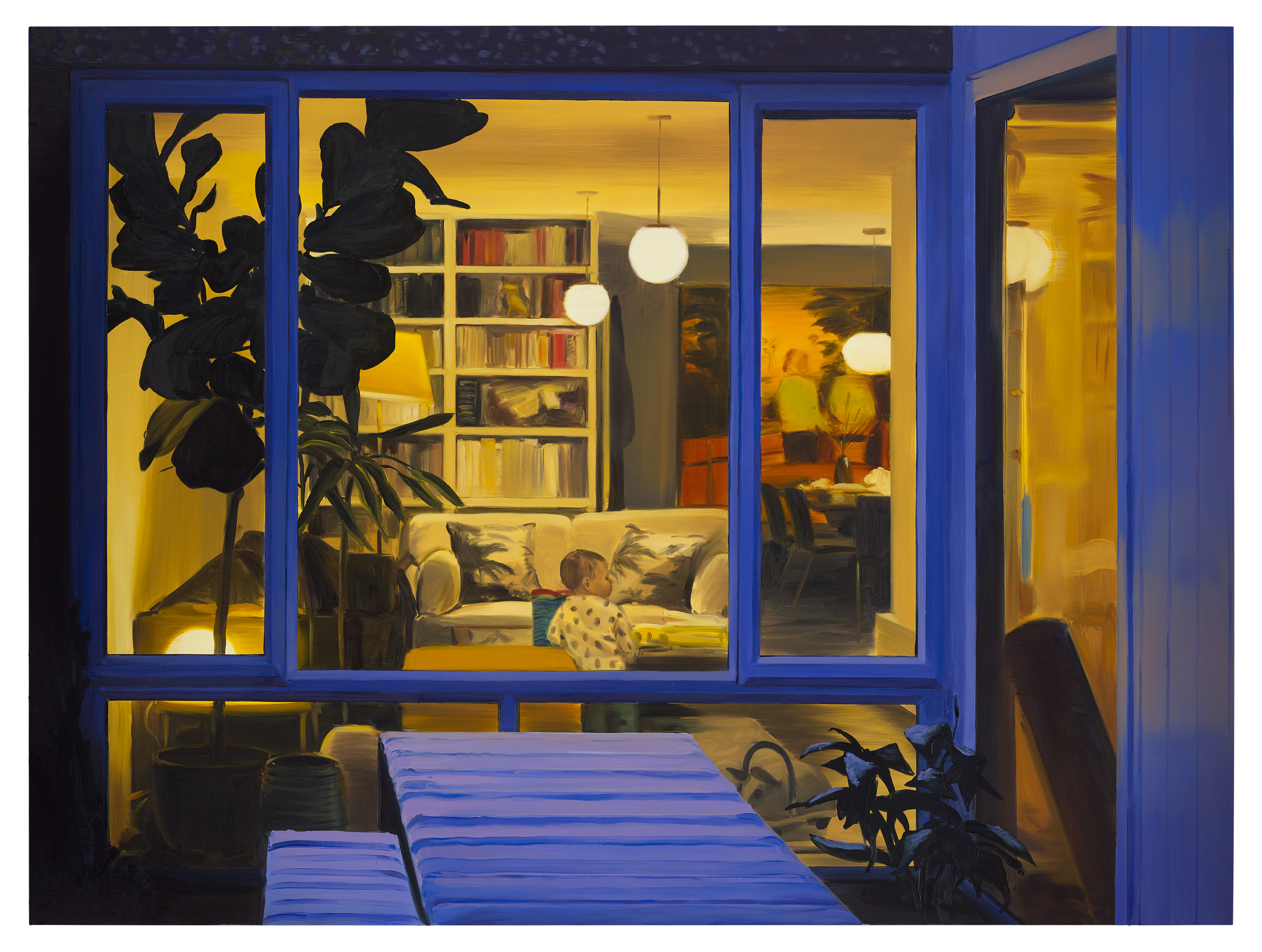 Caroline Walker's new show speaks to women everywhere, including me
Caroline Walker's new show speaks to women everywhere, including me'Everything related to my life with young children, because it's such an all encompassing experience,' the artist says of her new show at the Hepworth Wakefield
-
 Cassi Namoda is rethinking stained-glass windows at Turner Contemporary in Margate
Cassi Namoda is rethinking stained-glass windows at Turner Contemporary in MargateThe artist drew from an eclectic range of references when considering the traditional medium for a Turner Contemporary window overlooking the beach – she tells us more
-
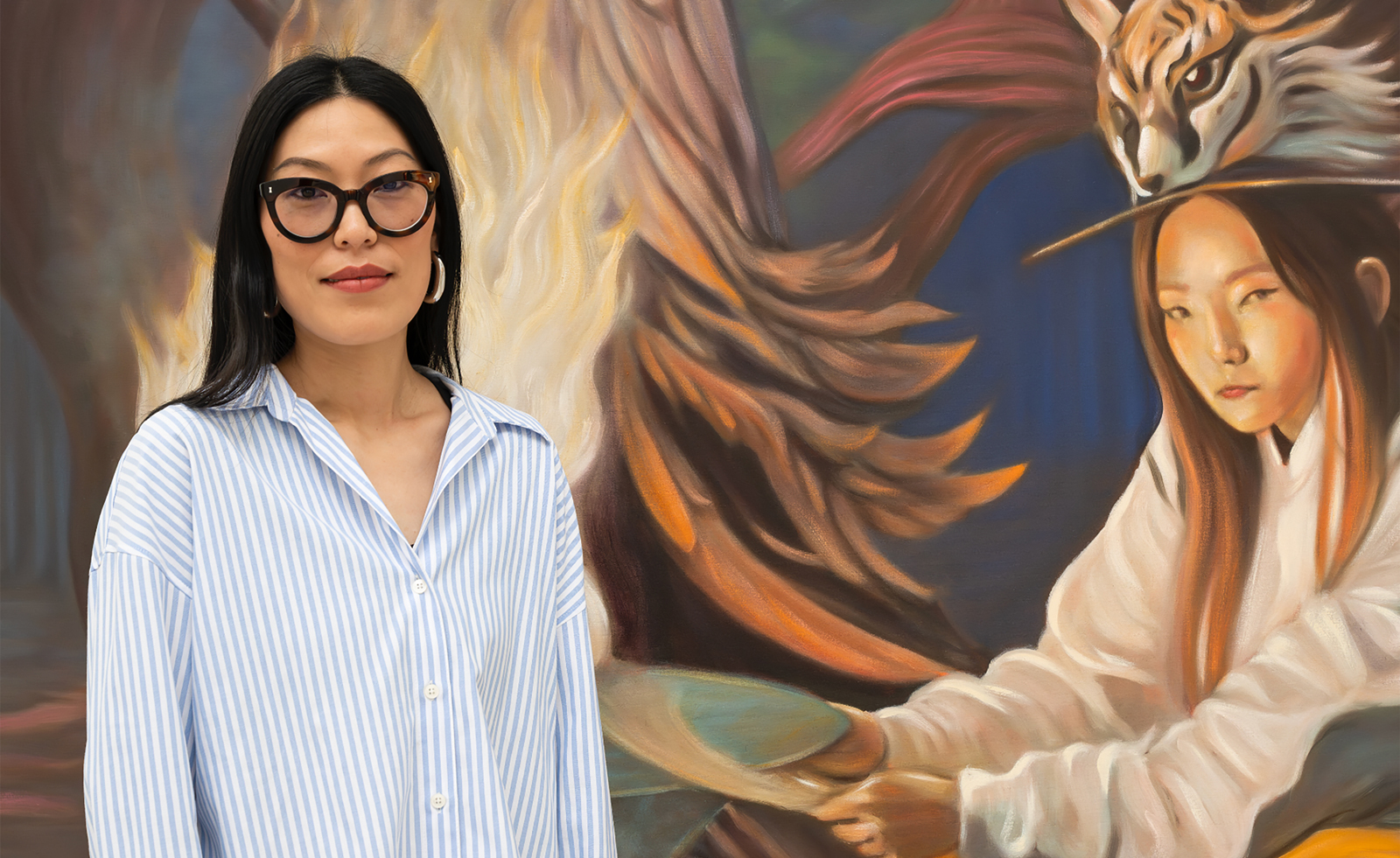 Meet the Turner Prize 2025 shortlisted artists
Meet the Turner Prize 2025 shortlisted artistsNnena Kalu, Rene Matić, Mohammed Sami and Zadie Xa are in the running for the Turner Prize 2025 – here they are with their work
-
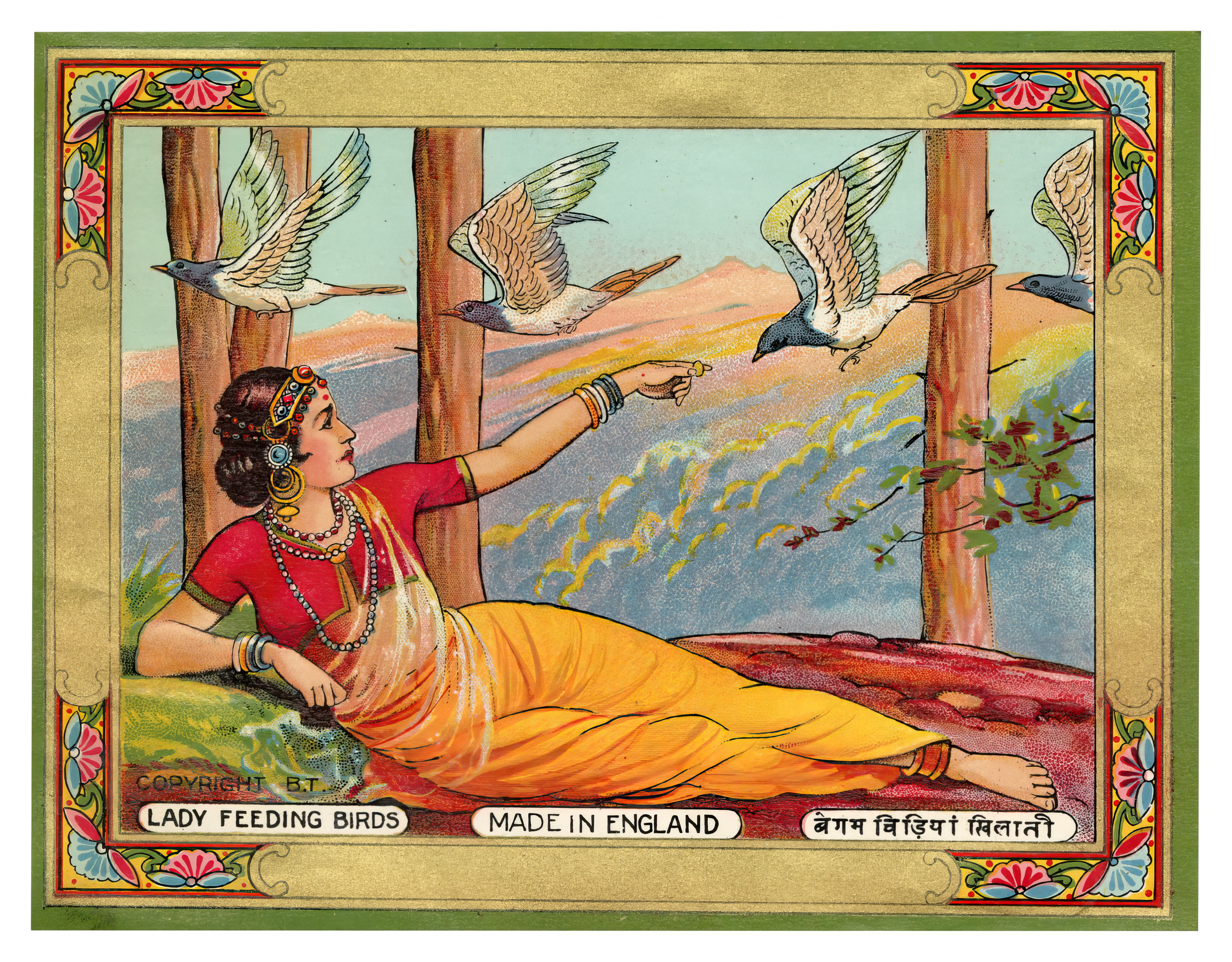 The art of the textile label: how British mill-made cloth sold itself to Indian buyers
The art of the textile label: how British mill-made cloth sold itself to Indian buyersAn exhibition of Indo-British textile labels at the Museum of Art & Photography (MAP) in Bengaluru is a journey through colonial desire and the design of mass persuasion